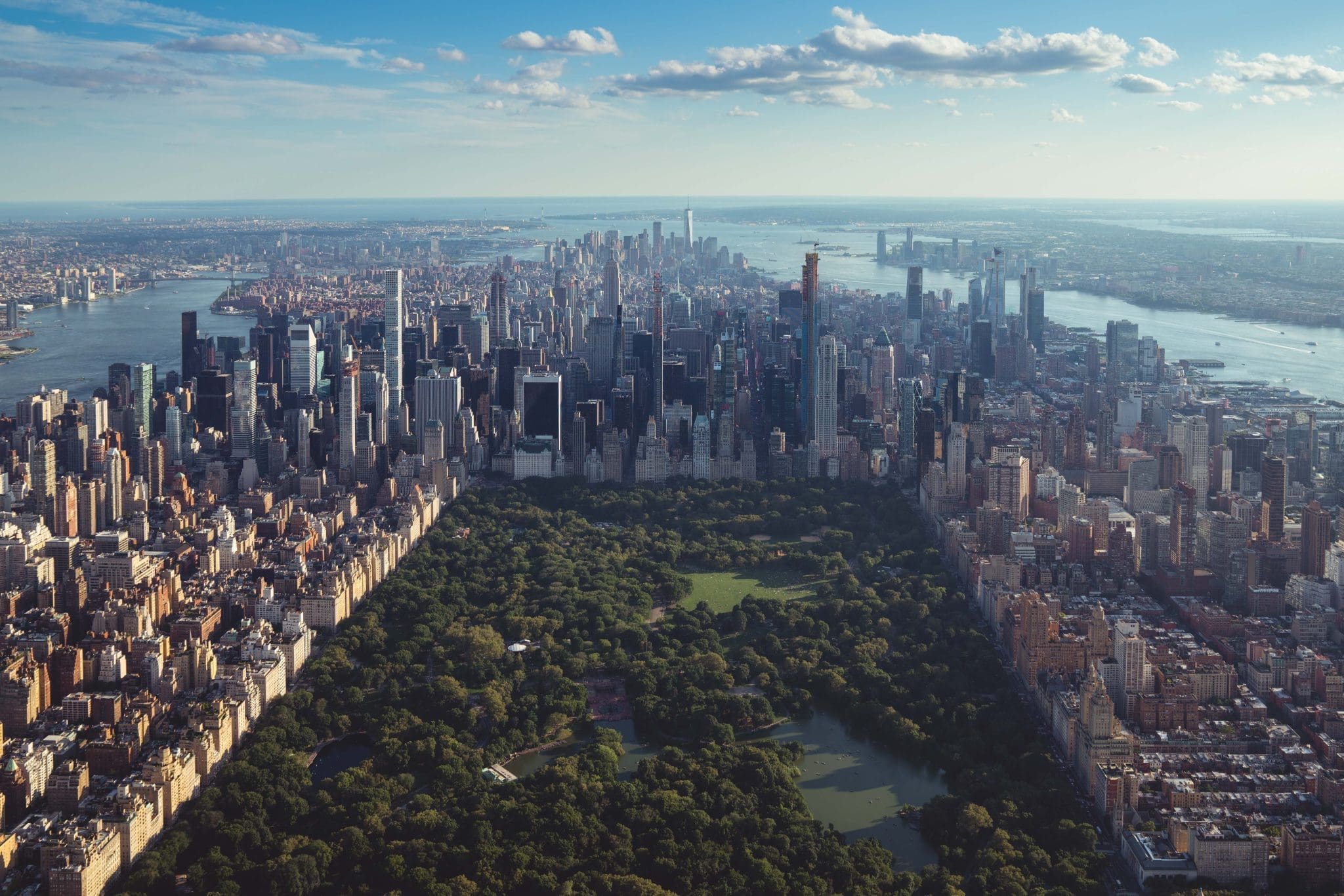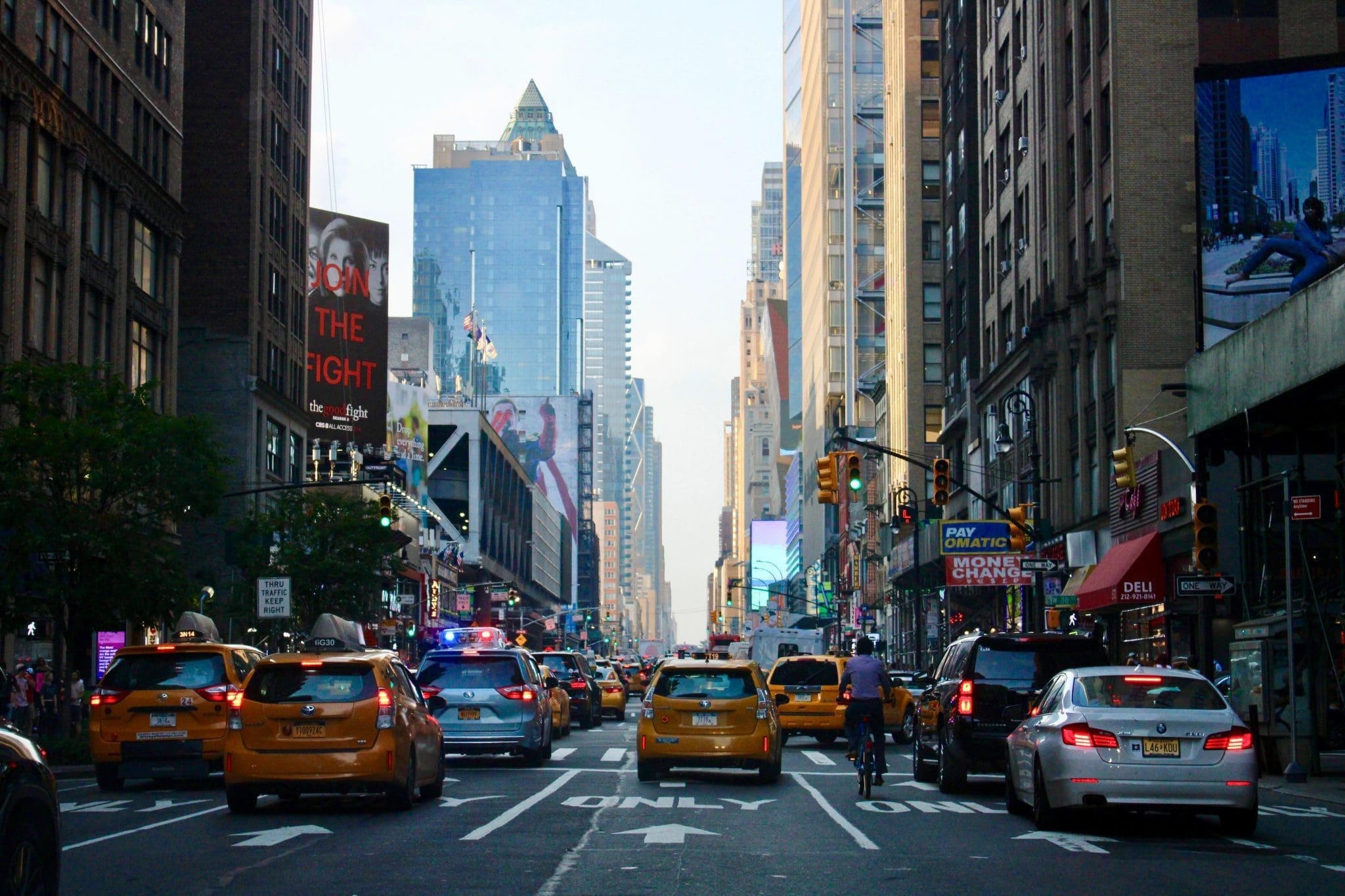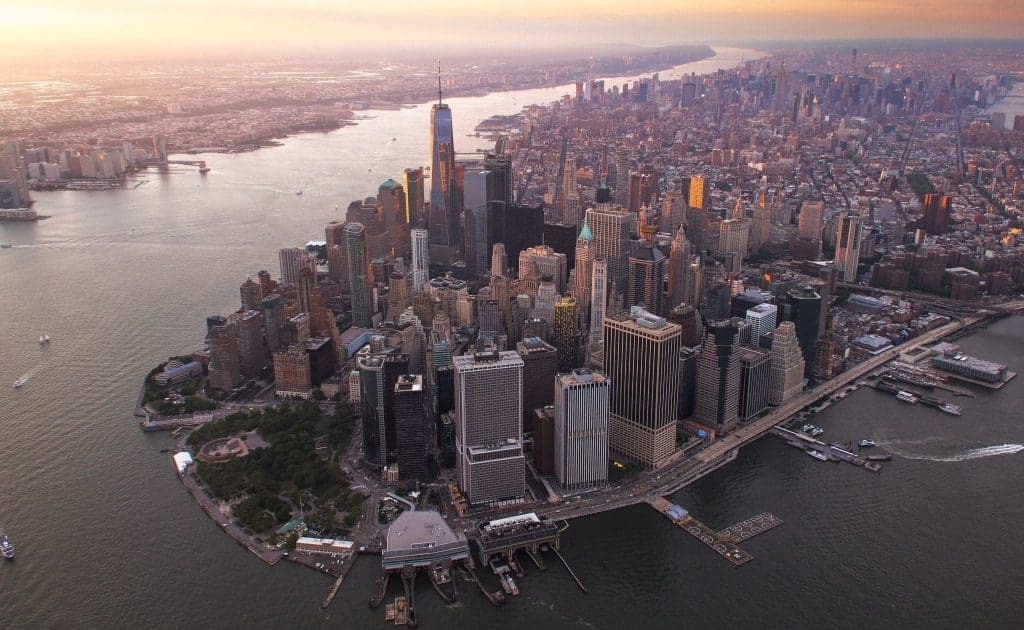New York City is the greatest city on the planet. A hub of travel, fashion, economics, and young twenty-somethings with something to prove. The city is known across the world the epitome of human engineering and settlement. It is also precariously perched between human existence and Earth’s geology.
Manhattan is built on land occupying the space between the Hudson and the East Rivers, a small part of the more broadly titled New Jersey-New York Estuary. Geographically, land such as this is traditionally composed of wetlands, which are marsh-like areas prone to flooding and soil erosion. In other words, estuaries act as a buffer between the ocean and the mainland – and they can be incredibly unstable to build upon. While also taking into account that Manhattan is an incredibly large and dense metropolis, could it be sinking into the land beneath it?
What is Manhattan Built On?
It’s important to note that Manhattan is not simply built on top of wetlands. Ever since the dawn of the city, land reclamation efforts have been conducted to make the epicenter of New York City habitable and stable. One of the oldest and most consistently used materials to expand and solidify the ground of Manhattan is certainly an unlikely one: trash. During its initial settling in America’s colonial era, New York City’s trash was either thrown into neighboring land or into the adjacent waterways. However, as trash accumulated, so did disease, and New Yorkers needed a new solution for their waste disposal.

New Yorkers realized they could use garbage to fill in the land (hence the term “landfill”) upon realizing that their central reservoir would have to be closed as it became too polluted by the local industry. Throughout the rest of its life, Manhattan’s landfill efforts did shift from actual garbage to leftover excavation and construction material, but nevertheless, they persisted. To this day, areas all across the city are built upon landfills, from Rikers Island to Battery Park.
How Much Does Manhattan Weigh?
Manhattan is a massive swath of land, covering nearly 23 square miles of land in New York State. But how much does Manhattan actually weigh? All of the buildings, people, cars, and Bodega breakfast sandwiches surely have to amount to an unfathomable mass. In 2015, Christopher Abell of Thrillist tried to figure out what that mass actually was.
Abell cites that there are 3.9 million people inhabiting Manhattan on a given weekday — a number that includes commuters and tourists. With a CDC estimate of the average human weighing 181 pounds, the weight of humans on the island is 352,950 tons. Abell also suggests that there are 2,683 tons of pets, 123,123 tons of food and water, and over two million tons of vehicles (e.g. subway cars, dump trucks, cars).
Abell then accounts for the mass of Manhattan’s infrastructure. He estimated that the weight of one building over 30 stories was 3,000 tons per floor, while buildings under 30 stories weighed 200 tons per floor. While this breaking point of 30 stories is arbitrary, it comes from the expertise of Abell’s colleague, an engineer. Using this quantification, alongside data from the New York City government, the weight of buildings in Manhattan clocks in at 118 million tons.

Abell points out that there is other “stuff” that is simply immeasurable, like cell phones, clothing, bicycles, and refrigerators, so his calculations are based upon empty buildings inhabited by people and pets with no possessions. Under that pretense, he calculates that the total mass of the island of Manhattan weighs 125,208,467 tons or over 250 billion pounds.
Is Manhattan Sinking?
Short answer, it’s entirely possible, and there are two main things pointing in that direction. First, as cities increase in size, so too does their water consumption. This water is pulled from aquifers, which are layers of water located within the bedrock. These aquifers naturally recharge with input from rainstorms or surface water, but some can be drained too quickly. This is the case in Jakarta, a city that is currently sinking. Jakarta’s groundwater was/is being extracted too quickly, destabilizing the ground beneath it, and causing the city to sink.
Second, New York City is incredibly susceptible to rising sea levels. Since the 1950s, the sea level in the New York City area has already risen 9 inches. Scientific American reports that sea-level rise over the next century could rise 5 feet (plus or minus a foot) in the New York area. For the sprawling metropolis of New York City, this is an incredibly sobering projection, as flooding from hurricane storm surge and rainfall events has only gotten worse.
Featured image by Brandon Jacoby
I'm a scientist obsessed with New Jersey's environment and geology. I'm probably reading science fiction. Or watering my plants.
- Kevin Hurlerhttps://thedigestonline.com/author/khurler/
- Kevin Hurlerhttps://thedigestonline.com/author/khurler/
- Kevin Hurlerhttps://thedigestonline.com/author/khurler/
- Kevin Hurlerhttps://thedigestonline.com/author/khurler/


